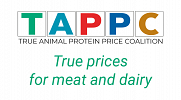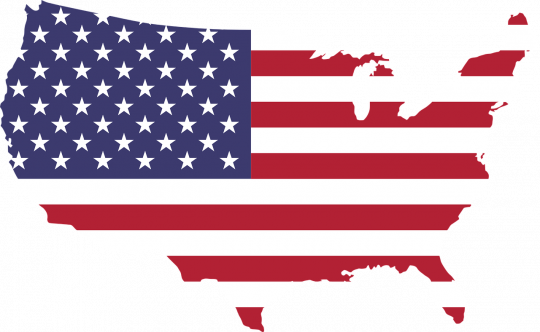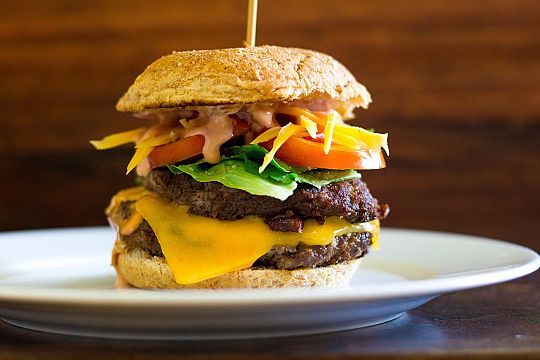Now we are talking: how to design a 'Made in America' Meat Tax?
Last August, three months before the USA elections, the New York University School of Law published an article titled 'Designing a "Made in America" Meat Tax'. It was written by authors Dale Jamieson, Emma Dietz, and Katrina Wyman. They propose to design a federal tax on all meats, with tariffs depending on the GHG-emission content per type of meat, levied on producers, together with a border tax on meat imports and tax revenues being used to compensate low income-people.
Other second best options to be explored are State taxes on all meats, with a uniform tax level or rates based on their GHG-emission contribution, imposed on distributors of meat, with a rebate for low income groups. Such State taxes may have more political support compared to federal taxes. Fourty five States have sales taxes, and thirteen States already have sales taxes on groceries. They could establish new sales taxes on meat or increase existing sales taxes on meat while reducing or remaining taxes on non-meat foods or non-meat items. Even cities can start to tax meat, like many of them already do for sugar taxes (soda), like Washington, Pennsylvania, Seattle, Philadelphia, Oakland, San Francisco and Boulder. But for cities there are more restrictions for taxation, compared to States. For instance California legislated a ban until 2031 on local governments to tax groceries (with some exemptions). A tax for beef only is also considered by the authors, since beef accounts for nearly 45 percent of US dietary GHG emissions in 2018.
The Article seeks to put the idea of a meat tax on the agenda of scholars, climate policymakers and philanthropic organizations as a tool for reducing GHG emissions from agriculture. Agriculture is the fourth largest emittor of GHG-emissions in the USA but not much policy attention is paid to it. Drawing on scholarship and policy proposals from mostly European countries, where discussions of taxing meat are further advanced (like the Dutch TAPP Coalition meat tax proposal for the EU), this Article identifies key issues that would need to be addressed to design a meat tax that could be implemented in the United States. It also recommends an iterative modelling process to devise concrete proposals for an equitable meat tax that would reduce agricultural GHG emissions. A meat tax could be one tool in a basket of policy measures designed to reduce emissions from agriculture. In addition, reducing human consumption of meat would have the ancillary benefits of improving human health and animal welfare, as well as the environment. They authors used different criteria to design the 'Made in America' meat tax like efficiency, equitability and effectiveness. They ask philanthropic organisations to fund research to help design and quantify effects of different models for meat taxation at federal, state and city level.
It is clear the authors were inspired by the TAPP Coalition proposal for a meat tax for EU countries and the report published in 2020 titled: 'Aligning food prices with the European green deal' and 'Sustainability charge on meat', presented at the EU Parliament with a lot of global media coverage. This proposal showed that such taxes can half the consumption of meat and reduce GHG-emissions by 120 Mton CO2 eq per year, equal to 3 percent of all GHG-emissions across Europe (equal to all emissions from aviation).
The TAPP Coalition meat tax proposals are mentioned often in the article and design characteristics like GHG-emission pricing and how to use the tax revenues, were copied at certain level into the new USA meat tax proposals. But the authors translate the proposals for the situation in the USA, where federal sales taxes are non-existing, livestock farms are very large compared to the EU and more attention is needed in the USA for impacts on low income-people. This led to the proposal to consider a federal meat tax for farmers in stead of a tax on distributors or retail companies. At State or city level, a tax imposed on meat distributors is advised, to make consumers pay more for meat. In all cases, the design of a meat tax should avoid any negative impacts on low income people, or even lead to net benefits for them. The authors propose to use meat tax revenues to fund programmes that address hunger such as SNAP, school lunch programmes and local food banks, or even better: to reduce costs of alternatives to meat for low income people by subsidising purchases of food such as vegetables, fruit and legumes. This could be done by distributing (healthy food) vouchers to low income people using the proceeds of a tax, as Seattle did during the Pandemic using money of a soda tax. Since food prices are very high in the USA and reducing such costs became an election topic, this proposal needs more attention. Such food voucher schemes work very well in different EU countries and the UK. In the Netherlands, lotteries provide healthy food credit cards annually to millions of people to buy healthy food like beans and meat alternatives for free at the largest retail company Albert Heijn (part of Ahold). Such programmes can be adopted by governments too at in a monthly scheme to buy specific climate friendly and healthy foods for free in different locations.
The authors also refer to federal laws that preempts the taxation of food purchases made using Supplemental Nutrition Assistance Program (SNAP) benefits for low income-people. The availability of SNAP benefits and the rules governing them may provide a framework in the United States for addressing some of the concerns that a meat tax would disproportionately harm low-income people, although SNAP benefits likely could address regressivity only at the margin.
In addition to using tax revenue to address regressivity (negative impacts on low income-people), a tax on meat would provide governments with a new source of revenue that could be directed to the government’s general fund and spent as governments prefer. The tax could also be spent on purposes such as regulating the meat industry to reduce risks to animal and human health, education, or reducing other taxes.
The Article has not considered the political feasibility of different approaches to key issues in designing a meat tax, political
feasibility might influence the choice of designs to model. For example, if element one (a federal tax) were varied, a tax might be
modelled for States or cities (eg California or Berkeley) with the thought that they might be among the jurisdictions more likely to be open to taxing meat at some point in the immediate future, given the priority that they attach to reducing GHG emissions and animal welfare.
Armed with concrete proposals designed with the U.S. context in mind, adressing all potential concerns, advocates might then seek to advance the idea of a meat tax in civil society groups and eventually in the political process. While there is little political appetite today for a meat tax, politics can quickly change. This was shown by the sudden political support for sustainable energy subsidies during the Pandemic and imposing a price on carbon in thirteen states through cap-and-trade programs even if the federal government doesn't like it. At EU level, the EU Commission is now studying an Emission Trading Scheme (cap-and trade program) for GHG emissions from the food system, eg at the level of slaugherhouses, dairy factories (downstream model) or closer to the consumer (retail companies). Germany proposed a high VAT tax on meat, by using tax revenues to support farmers to invest in animal welfare, while Denmark will introduce a GHG-emission tax on livestock by 2030.



